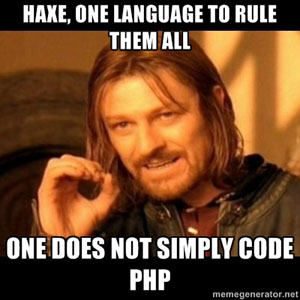This a blog post version of my post on the Haxe forum which didn’t catch enough attention I think. Native Extensions are crucial for game development.
Update: Kha & OpenFL, for example, have their own IAP extensions because of the different engine architecture. The blog post mentionned share some thoughts on Native Extensions, in fact… but nothing concrete is going on at the moment, no repository shared. Finally the native code should be the same, but the wrapper around the extension can change depending the engine. A native extension should have different building scripts depending the engine targeted, but the same native & Haxe codes. I hope we’ll see examples in the near future.
We made recently several HTML5 games (Canvas/WebGL) that were also delivered as an app thanks to CocoonJS which deliver better performances than Phonegap/Cordova. But the journey wasn’t easy: no obb support on Android, push notification certificate needed for iOS, a custom analytics library didn’t work on Android but worked fine on iOS. It’s simple if you deliver your game with CocoonJS you don’t have any control on the packing solution and so the whole process could be a nightmare. Recently CocoonJS has updated its portal and finally announced pricing, no way! It’s time to reconsider some plan…
Unity WebGL is getting better, but still not ready to deliver properly WebGL browser mobile game. So it’s definitely time to focus (again) on Haxe!
Continue reading A call to the Haxe community
